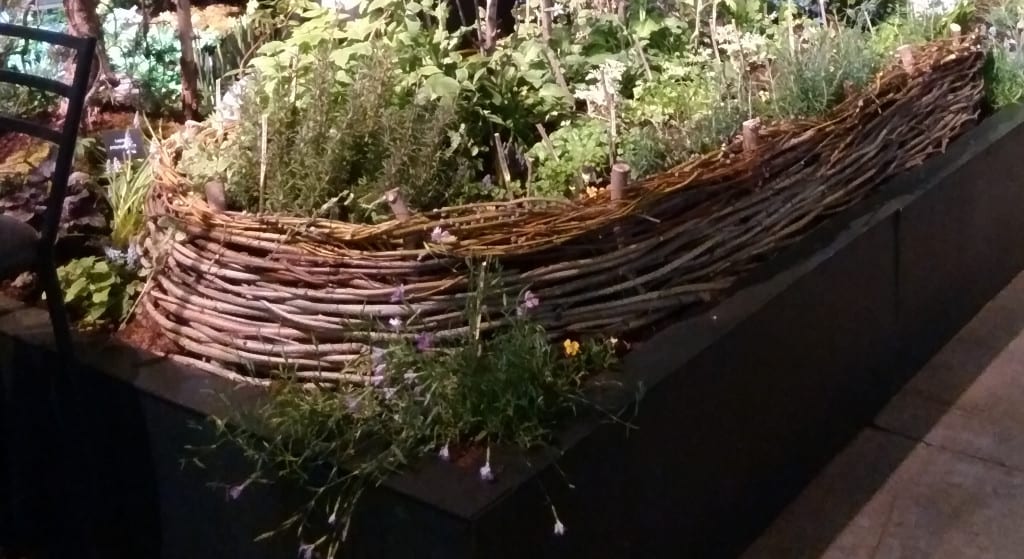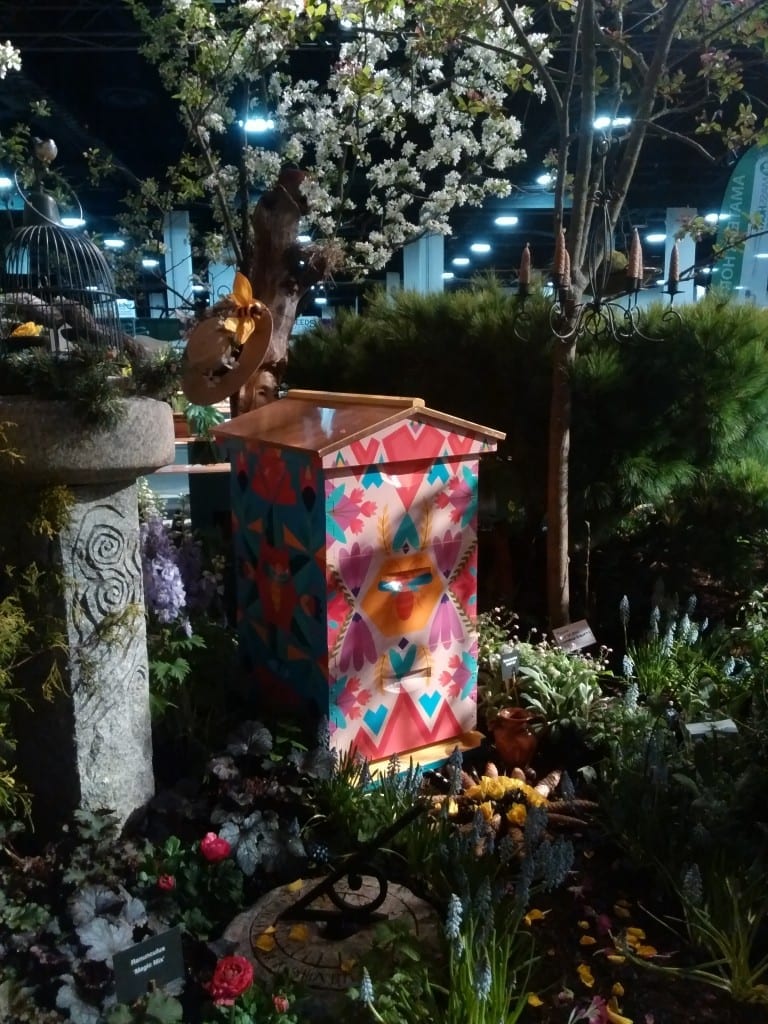ELA awarded its fifth Environmental Vision Award at the 2016 Boston Flower & Garden Show.
The Massachusetts Horticultural Society’s exhibit “Nature’s Classroom,” designed by John Forti and Terry Duffy, received this year’s award. Susan Opton, Terrascapes Landscape Design and two colleagues, Diana Simon Emma Pritchett, judged the exhibits against a list of criteria that included conservation of resources, use of recycled materials, and design guided by knowledge of and respect for natural ecosystems.

“Nature’s Classroom” designed by The Massachusetts Horticultural Society received the 2016 Environmental Vision Award.
According to Susan, “The exhibit was divided into multiple areas which showcased beautiful sculptural and artistic elements.” Recycled materials predominated: a shaggy bark trunk revealed a crowned woodland spirit, etched granite spheres depicted swirls and lines, rough lumber provided seating for a miniature tea table and mini-log rounds were used for the pathway. Finally, “a stacked stone tower bestowed luck and good wishes throughout the garden.”
Raised beds from woven willow boughs housed herbs and leafy greens, fulfilling one of the permaculture petals. The garden invited pollinators with species such as Amelanchiar and Cornus and then furnished dwellings for bees and birds in colorful beehives, mason bee nests, and bird house gourds. All elements of the garden encouraged and inspired engagement by visitors of every age. Aquatic terrain was represented visually through a river of bulbs which provided an illusion of a water friendly habitat.
Susan noted that the Mass Hort exhibit “displayed an acute sensitivity to all natural aspects of the environment encompassing light, soil, hydrology, as well as planted and repurposed materials.”
The winner of the ELA Environmental Vision Award receives a $150 donation to the environmental non-profit of its choice.
Each author appearing herein retains original copyright. Right to reproduce or disseminate all material herein, including to Columbia University Library’s CAUSEWAY Project, is otherwise reserved by ELA. Please contact ELA for permission to reprint.
Mention of products is not intended to constitute endorsement. Opinions expressed in this newsletter article do not necessarily represent those of ELA’s directors, staff, or members.



